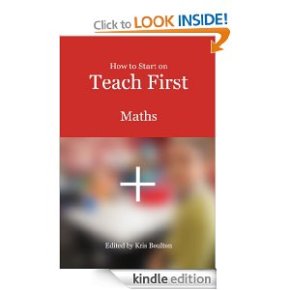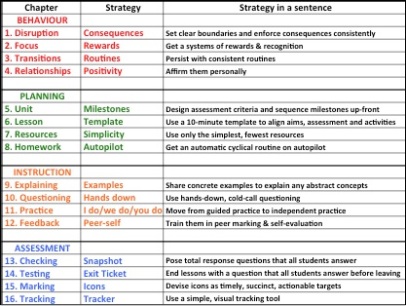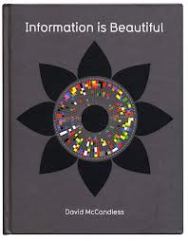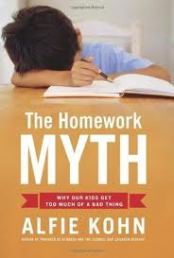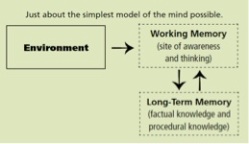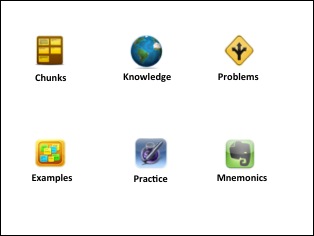
This project aims to publish an e-book for the 2013 cohort with practical ideas to support new participants to clear the first hurdles when they begin in the classroom. The guide focused on the foundations of teaching practice in order to accelerate participants’ impact on pupil progress.
Every year, new participants begin in schools and end up reinventing the wheel. But between us, we now have 10 years’ collective experience of tough classrooms to share.
Please use this online space to send in three or so of your stories of what has worked and why, by Saturday April 13th at the latest: https://www.surveymonkey.com/s/tfebook
We are looking for concise, punchy stories that are targeted at and useful for new first year Teach First participants, roughly 200 words long, contextualised by year, ability and behaviour, summarised up-front, conversational and jargon-free! Here are ten examples of anecdotes, five for the general section and five for the English section:
Disruptive behaviour
[7.5/low ability/disruptive behaviour]
A strike system undercuts intimidation.
This, the head of year told me, was no ordinary year 7 class. Attention spans of about two minutes, scarily personal insults and threats, fights breaking out across all lessons, and dark notes being passed about to intimidate other students; these were issues that made managing behaviour extraordinarily difficult with just one pair of eyes.
The strike system helped me set up crystal-clear boundaries and instantaneous sanctions for crossing the line. Without it, any hope of learning was doomed. Armed with a sequential series of choices and consequences, applying the system ruthlessly and relentlessly, relying heavily on positive phonecalls and postcards at any glimmer of improving behavioural effort, I began, day by day, lesson by lesson, to turn it round. It just helped me stay calm – there was always an action I could take for any defiance, disruption or disrespect. It was incredibly draining, but with consistency, the strike system paid off, defiance began to fade, the climate became less threatening, and my classroom more encouraging for those students who just wanted to learn.
Planning lessons
[8.4/mixed ability/distracted behaviour]
Creating a simple, visual planning template saves hours each week.
I was going to burn out if I didn’t do something. It never seemed to work when I tried to use my departments’ schemes of work. I never really knew what the thinking was behind the activities. So I tried to create every scheme of work from scratch, and students did respond much better to my enthusiasm for my own ideas. But it was exhausting. Planning 20 individual lessons a week was taking me over 20 hours on the weekend, meaning late nights, 7-day weeks, 14-day fortnights and a whole half-term without a break. I was going to burn out.
The 10-minute lesson template meant I could plan all 20 lessons in about three hours, all within my free periods at school. Weekends were free again! It took time before it actually took ten minutes, and at the start it took more like 30 minutes, but over time it became so automatic that planning was a breeze. It also helped me create much more focused, effective lessons when I started with the aim and the end-of-lesson assessment.
Resourcing
[7.3/middle ability/good behaviour]
Evaluating resources against the impact:effort ratio saves wasted time.
After every lesson in my first half-term I asked: what was the impact on learning of each resource, and how much effort did it take to make? I quickly realised that cutting up cardsorts had a very low impact for a very high effort, and stopped doing them. Similarly, a lot of the photocopying I was doing was flooding students with unnecessary sheets. It took a lot of time, hassle and stress, but didn’t do much for learning.
On the other hand, simplicity works. A slide for the objective, homework and starter was a renewable resource that doubled up as a settler and a hook. Google images and Youtube videos were plentiful, free and accessible as well as being powerful visual stimuli. Post it notes were versatile and allowed pupils to share, see and spatialise their opinions on spectrums and charts on the board. I used images, videos and post-it notes the most, simply because they had the highest impact for the lowest effort. I have never done cardsorts since.
Marking
Icons save time and accelerate progress.
This is probably the most useful thing I’ve discovered this year.
Marking books used to take me hours as I laboriously and painstakingly scribbled out individual comments for each person’s work. With my six classes of 30 students, marking 180 books even once a week, taking roughly 5 minutes to read, check, correct and comment on each, would have taken 15 hours – a part-time job just on marking – and seemed completely unworkable. But marking only every 2 weeks seemed equally unpalatable – if they had to wait eight lessons for any feedback from me, would they actually know how to improve?
Icons take a minute per book – meaning if I wanted I could mark every pupils’ book every lesson, taking only 6 hours a week, or roughly an hour after school a day. This made me realise that what matters most is how timely the feedback is. The instant feedback was so helpful for students because they had a new target to work on every single lesson. My starters were also sorted as they could action my targets if I devised them well. More than anything else I’ve done, it has saved me hours whilst helping them improve.
ENGLISH
Poetry
[11.3/middle ability/good behaviour]
SALSA helps Year 11 get beyond formulaic writing.
11.3 started so dependent on scaffolding that they couldn’t think outside of the box. Everything they wrote about poems was formulaic and constrained. I’d mark their books and there would be a few B’s and all the rest C’s or D’s – they weren’t coming up with enough of their own thoughts.
But what works so well with SALSA is the sequential series of questions they begin to ask of themselves whenever they approach any new poem. It gives them a powerful toolkit for creating their own ideas as they work through a poem’s effects, and write down their ideas. By the end of the unit, when the exam came, they were making their own connections between form and feelings, language and themes, attitudes and ideas. They were actually responding to the poem and unravelling its many layers of meaning. In the final exam, no one got a C. They got 100% A*-B, due mainly to the SALSA structure for interpreting poetry.
Novels
[7.1/high ability/excellent behaviour]
Choosing a challenging text like Oliver Twist reaps rewards with top sets.
My department gave me a blank slate to design a unit of work on Oliver Twist for a top Year 7 set. I selected the key facts about Dickens’s biography and upbringing, and the experiences that led to him writing the serialised novel in 1837, aged just 24, just as a young Queen Victoria came to the throne. I decided what pupils should learn about 1830’s London, its poverty, criminal justice system, capital punishment, the 1834 Poor Laws and workhouse conditions. They learned about street gangs and gender inequality in detail. They learned about prejudice against Jewish merchants and the fever that Dickens’ sister-in-law died of in 1837. As we read Oliver Twist, it hit me how useful all this knowledge was for unlocking the layers of meaning in the novel. They understood why Dickens chose a poor orphan as his hero. They understood why Rose Maylie almost dies from a fever, and why Dickens ensures his character survives in fiction as he could not ensure his beloved sister-in-law could survive in life. They understood why the workhouse existed, and unraveled the mystery of why Oliver’s mother abandoned her baby to the workhouse. The interpretations in the essays these Year 7 students wrote after learning all this valuable contextual knowledge were extraordinary, as my Head of Department’s astonished look when he moderated their grades testified.
Spelling
[7MD/low ability/distracted behaviour]
Sequencing then interleaving helps strugglers remember their spellings.
I started off with 10 words a week from this database. We’d do 10 in the first lesson of the week as a quiz, then they’d learn those 10 for homework, and do a test on those 10 in the second lesson of the week. The instant feedback really motivated them, to the extent that most of the class was coming early to lessons in break to practise. Most of the class was getting 10 out of 10 by the second lesson each week. But some still weren’t, and even ringing home wasn’t working.
Interleaving helped them remember every word. Instead of 10 a week, I chose just four to start, then built up by four words a week, including the first four and every word they’d learned since. Knowing which words are most often misspelt, this worked wonders – they never misspelled interesting, technique or simile again!
Grammar
[10.2/high ability/good behaviour]
Problem-solving grammar helps students correct their own mistakes.
Just before I taught them problem-solving grammar, just weeks before their English Language controlled assessment with a third of the marks for variety and accuracy of grammar, punctuation and spelling, most of them wrote sentences like this:
One cold winter day, we lined up for the 100m sprint and i lined my self out determined to win, and as soon as the whistle blew to begin i set off….. leaving every1 behind me, at first i believed it to be a fluke as i really needed the toilet that day and i imagined there was a toilet at the finish line but again and again it happened i came first.
After just a few lessons on spotting and correcting run-on sentences and comma splices, they went into the assessment with clear, punchy and accurate punctuation, which prevented this top set from falling down to D grades unnecessarily!
Speaking
[10.4/mixed ability/disruptive behaviour]
A trial by jury brings the best out of a badly behaved Year 10 set.
I set up a murder trial courtroom, and hoped the class would genuinely want to find out what would happen. Students opted into roles as 2 judges, 12 jurors, 3 defence and 3 prosecution lawyers, 3 defence and 3 prosecution witnesses, 2 victim’s relatives, 2 defendents and clerks – a lot of scope for individuality in a class of 30.
This Year 10 class’ behaviour was so disruptive that I was really worried it would descend into anarchy. But to my disbelief, they raised their game and listened carefully to each others’ speeches and interrogations. The best bit was when the verdict came back as ‘guilty’, then one defendant got a sentence of 12 months imprisonment and one got 127 years (due to judge favouritism) to roars of laughter from the class!
Tracking
[10.2/high ability/distracted behaviour]
Online tracking turns disruption into motivation
What’s the most powerful student motivator? I used to think it was phonecalls or postcards home to parents, but whilst they help behaviour, it doesn’t sufficiently motivate effort and hard work. It’s too extrinsic – you need an intrinsic motivator to get them to really want to listen, learn and achieve. In my experience, what motivates them most is peer pressure – making their results visible to their classmates.
10.2 were, at best, distracted. They were just so talkative and interested in each other that it was nearly impossible to get them to focus. I felt bad sanctioning them as they were bright, energetic and positive young people – but they just couldn’t concentrate.
What changed it was an online spreadsheet with colour-coded grades shared on googledocs after each lesson. They could instantly see how well they’d done, and crucially, how well they’d done compared to their peers. No one liked getting a D when everyone else was on a B, just because they hadn’t put in the effort they were capable of.
Of course, this depended on me grading every book after every lesson, and giving feedback twice a week after double lessons. It also required strong planning of the paragraphs or essays I would get them to write to keep their practice focused. But the effort it resulted in was extraordinary. One unmotivated girl had persistently got C’s and in the last lesson before the assessment, I saw her at 5pm after school. ‘Was it good sir?’ she asked eagerly. ‘Check your phone!’ I replied. She saw she’d got an A and was jubilant – everyone else would see. Instant feedback, hard work, peer pressure and online visibility had worked a treat.
Any questions, email joe.s.kirby@gmail.com

